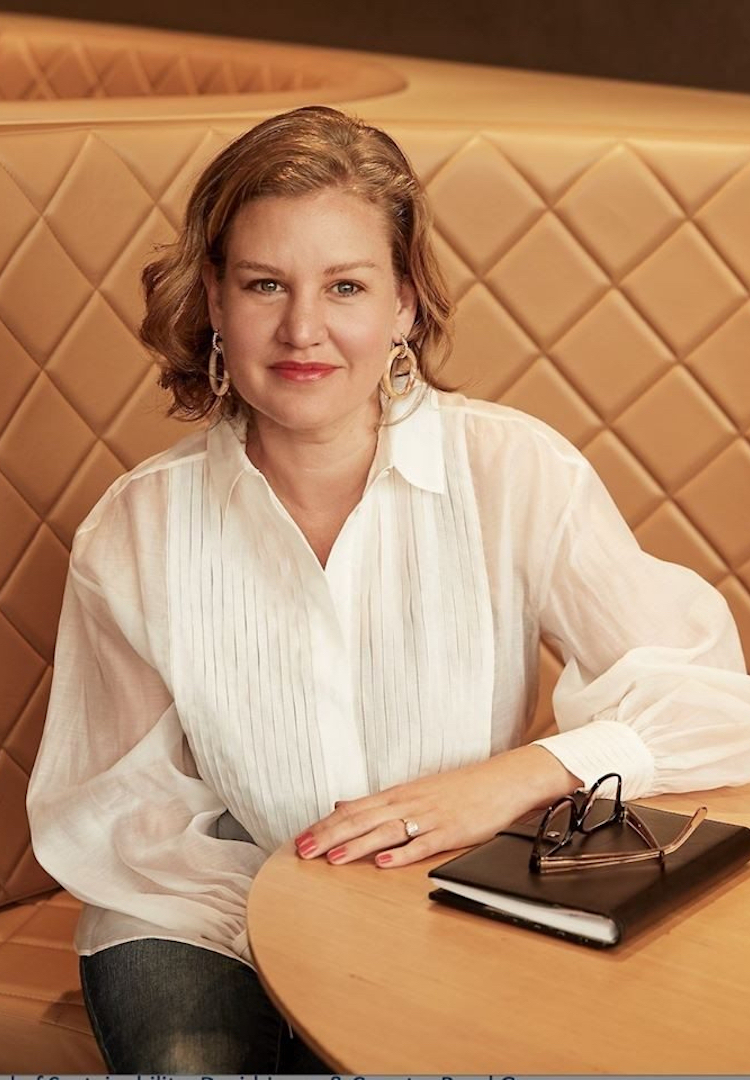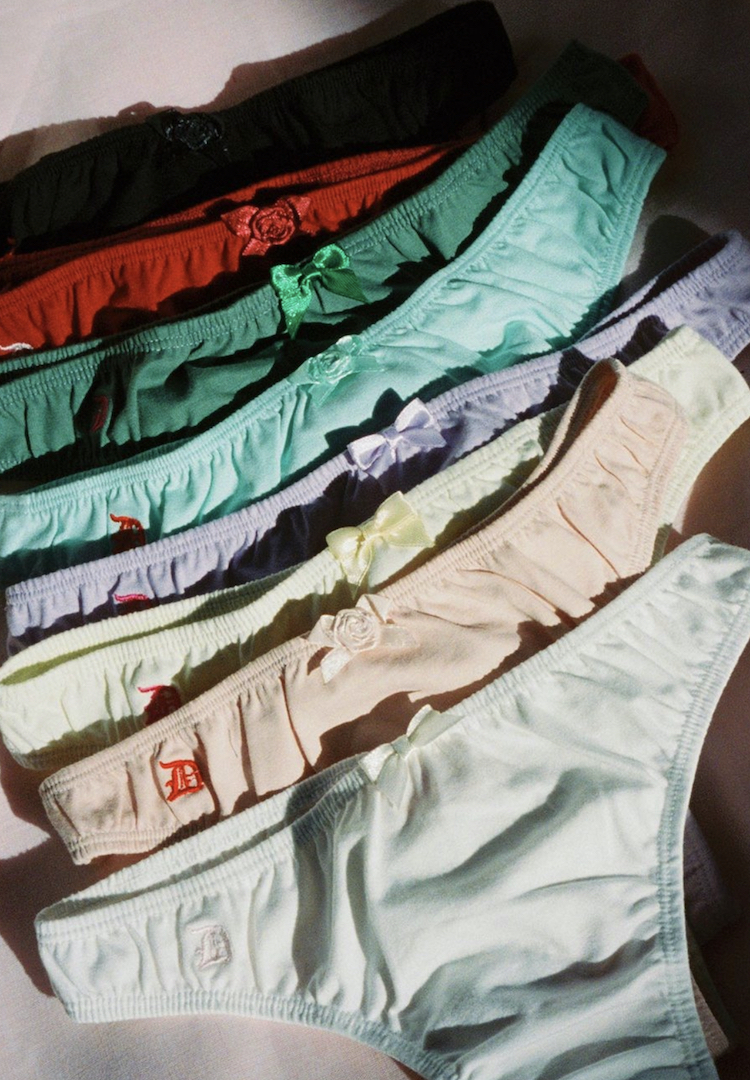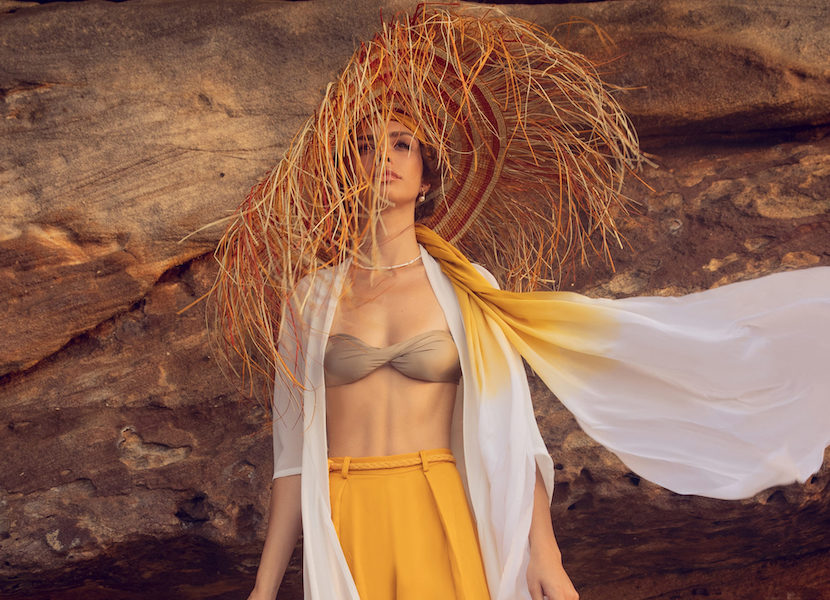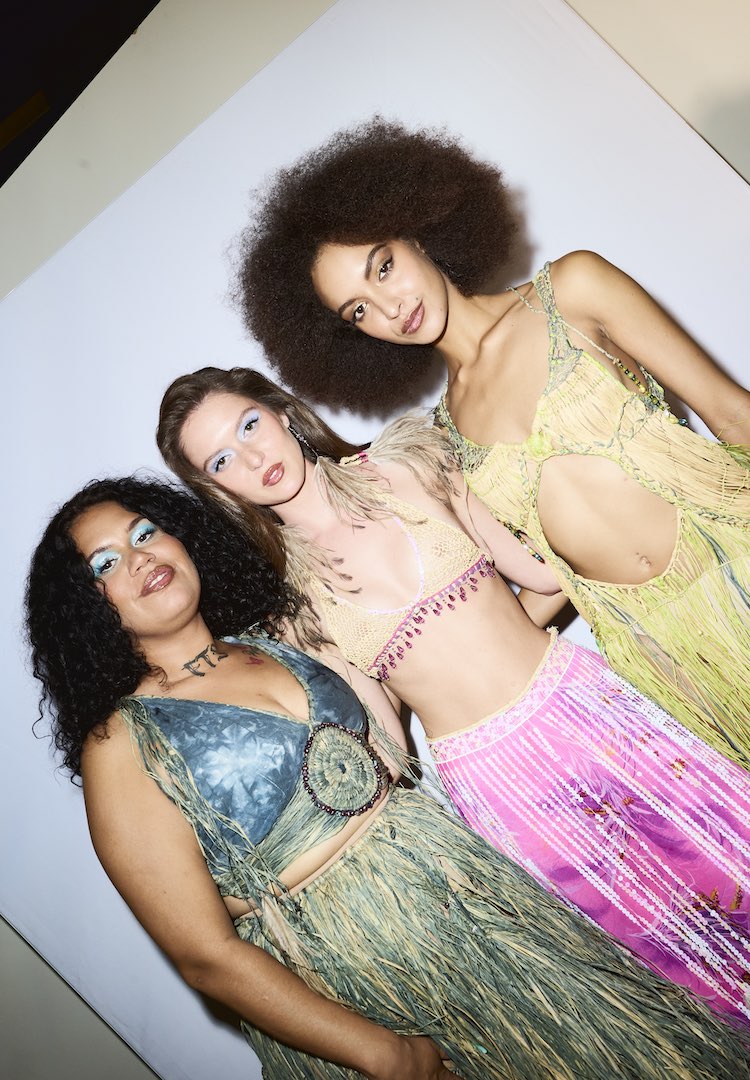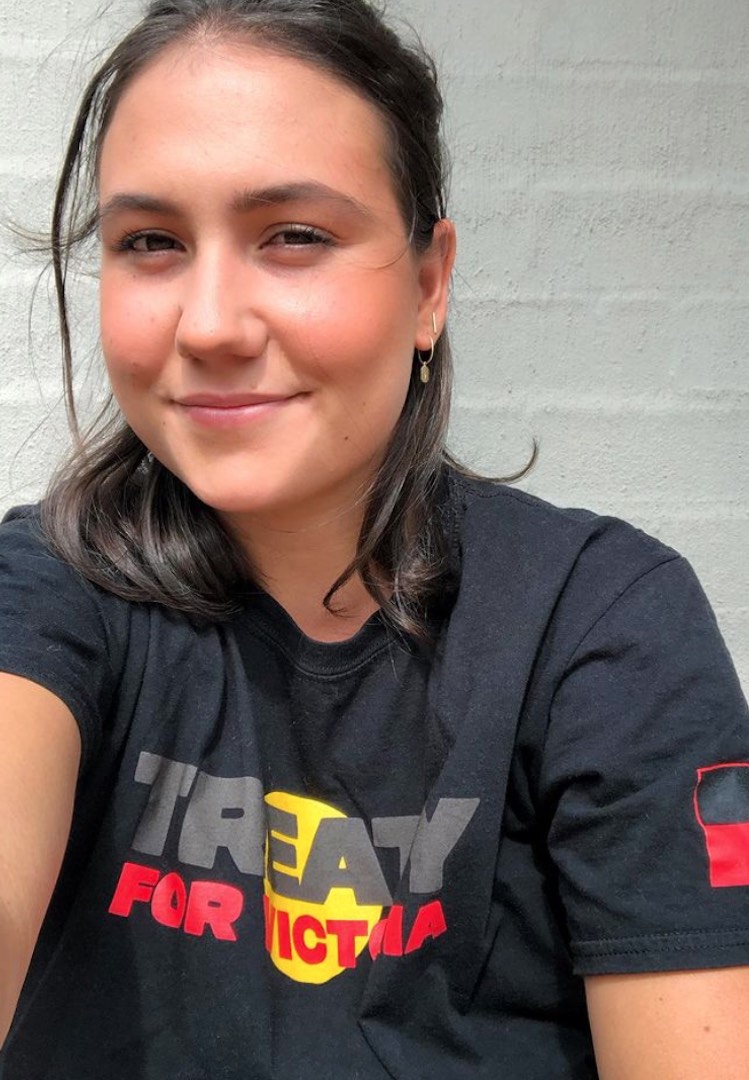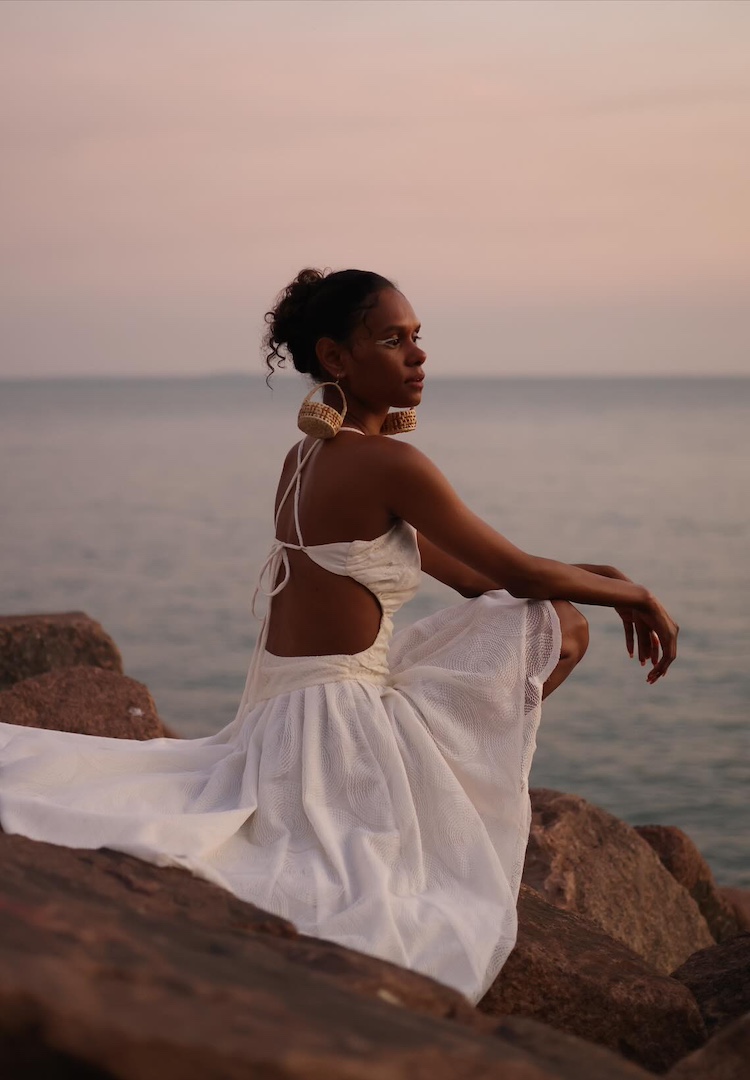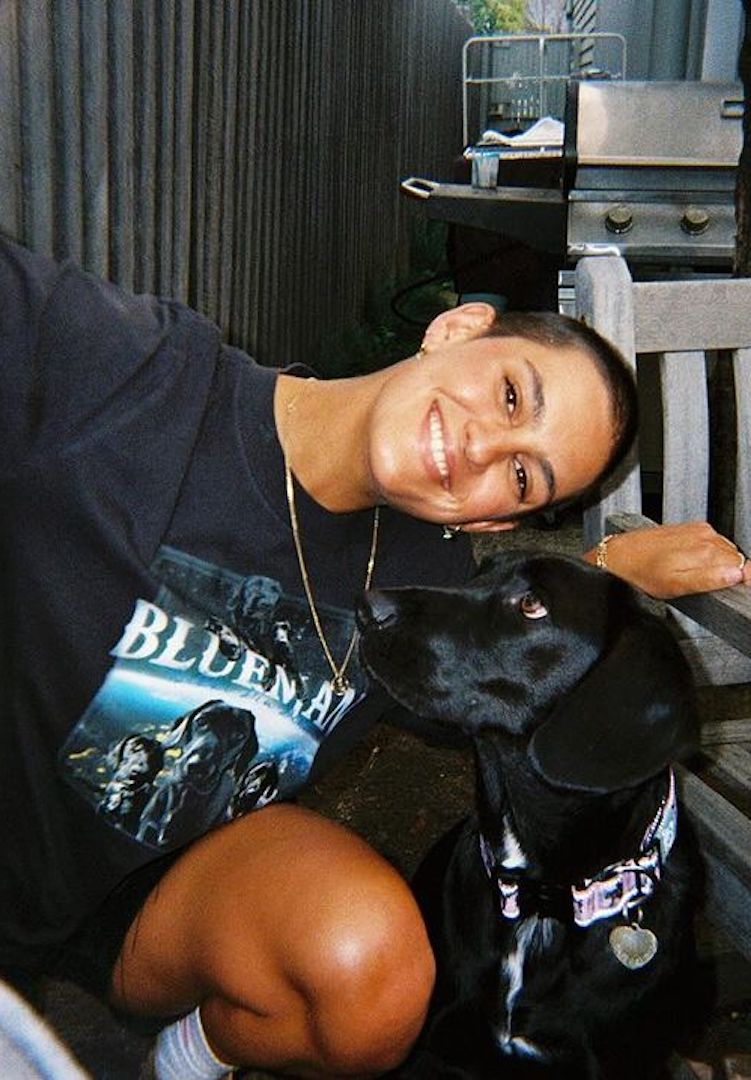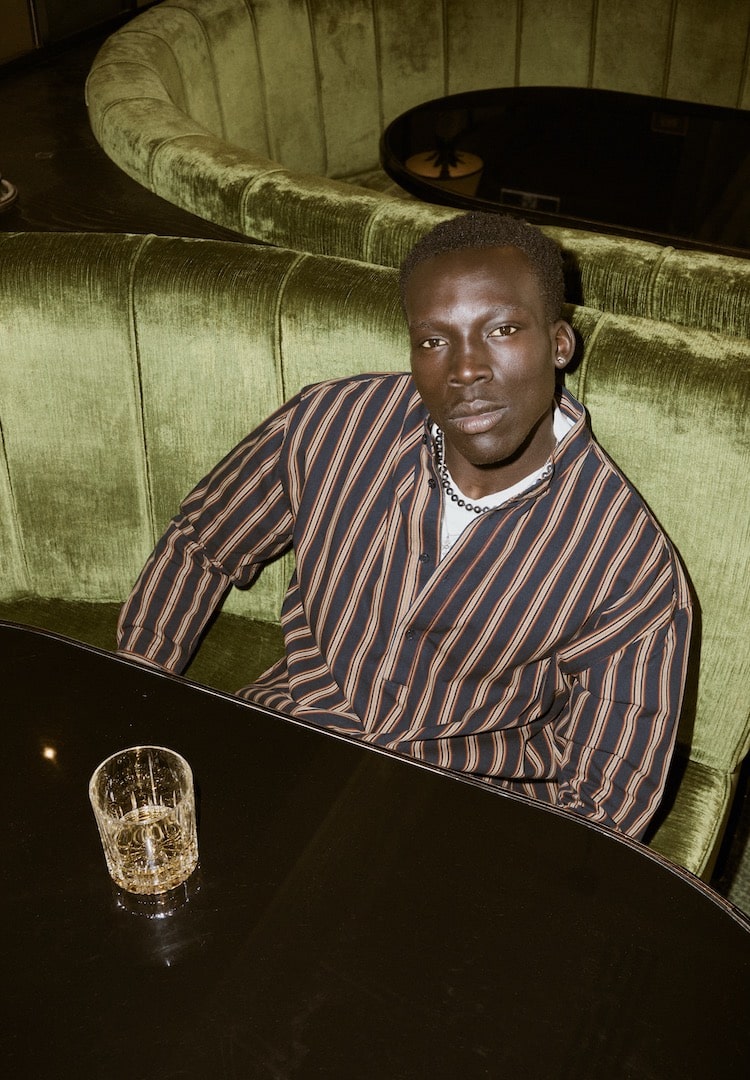A rundown of every National Indigenous Fashion Awards nominee
IMAGE VIA MAARA COLLECTIVE
WORDS BY MAGGIE ZHOU
Meet the 33 chosen First Nations creatives.
We’ve got a hell of a lot of creative talent here in Australia. And as the world freezes in the midst of a pandemic, we’ve been reminded of the importance of championing our backyard businesses and creatives.
This year marks the first ever National Indigenous Fashion Awards (NIFA), an event that seeks to provide a platform for emerging and established Aboriginal and Torres Strait Islander fashion designers.
A shortlist of 33 talented artists and makers has been announced in anticipation for the awards ceremony this Wednesday. Over six categories, various designers, models, activists, printmakers, jewellers and sculptors have been handpicked.
Cultural adornment and wearable art, textile design, community collaboration, environmental and social contribution, special recognition and fashion design are the categories on offer. Get to know these First Nations creatives, learn their names and what they do.
Cultural adornment and wearable art award
This award is for wearable art that is seen as fine or expressive art. Nina Fitzgerald, the Creative Director of NIFA, explains that cultural adornments are a form of visual vocabulary for First Nations people.
Up for the award is Lillardia Allirra Briggs-Houston, a Wiradjuri Yorta Yorta Gangulu woman who creates hand-printed fabrics and artworks in warm hues on linen fabrics.
Peggy Griffiths is a Miriwoong woman and her entry, the Legacy Dress, is inspired and co-created with her grandchildren, with each of its nine natural fibre layers hand-block printed by each of them.
Jan Griffiths, Peggy’s daughter, is also up for nomination. She is a Miriwoong/Ngarinyman painter, ceramic artist and writer and is driven by storytelling and sustaining cultural knowledge.
Debra Beale is an artist, designer and jewellery maker from the Palawa/Yorta Yorta and Gamilaraay/ Wonnarua Nation, whose work ties in with cultural heritage, family and country.
Lisa Waup is a Gunditjmara and Torres Strait Islander artist who is well-known for her sculptures, woven works, drawings and cross-cultural collaborations that intersect her ancestral connections with her commitment to sustainability.
The textile design award
Woven, knitted, dyed, printed and ornamented pieces are featured in this category. Since the mid-1950s, Aboriginal artists have been producing textiles with a recent resurgence of block and screen printing.
Wiradjuri Yorta Yorta Gangulu woman Lillardia Allirra Briggs-Houston is also up for this award. Alongside her is family-business Rukaji Designs, based in Fitzroy Valley, West Kimberley in Western Australia. Using bush medicines and natural dyes, each of its pieces is one of a kind.
Kieren Karritpul is a 26-year-old Ngen’gi Wumirri artist who dabbles in painting, printmaking, fabric and ceramics. His work is inspired by the local flora and fauna as he incorporates traditional weavings, fishnets and stories of country into his detailed textiles.
Dymphna Kerinauia, Kaye Brown, Michelle Woody, Nina Lydwina Puruntatameri, Cornelia Tipuamantumirri, and Bernadette Mungatopi are six female artists from Munupi, Jilamara and Ngaruwanajirri Art Centres. They’ve partnered with North, a non-for-profit organisation, to create vibrant pieces of clothing inspired by country, the moon, the stars, the sun, bush tucker and hunting.
Ikuntji Artists was the first established art centre by and for Western Desert women. Its designs are unique to the artists’ experiences and the environment in central Australia. Bold colours and patterns are quintessential to its art, fashion and merchandise.
A weaver, a painter and fashion collaborator, Selina Nadjowh is known for her delicate and balanced compositions. With her culture shown through traditional motifs, her screen-printed fabrics and t-shirts are some of the most popular products at Injalak, a non-profit Aboriginal-owned art centre in Gunbalanya.
The community collaboration award
This award champions the cultivation of effective and respectful relationships between Indigenous and non-Indigenous people. Ethical collaborations that provide a fulfilling two-way cultural exchange is key.
Bula’bula Arts collaborated with Maara Collection, a luxury resort wear brand headed by Yuwaalaraay woman, Julie Shaw. Julie travelled to Arnhem Land to work collaboratively with Bula’bula Arts’ artists from the beginning stages of design concepts to the sourcing of materials to the weaving of pieces.
Artists from Hopevale Arts and Cultural Centre collaborated with students from Queensland University of Technology for a collection titled Guuliil, meaning jellyfish in Guugu Yimithirr. It’s symbolic of the Aboriginal belief that harmony comes from balance in the natural world. Artists channelled cultural stories into artworks that projected onto the student-designed garments, bringing new life to wearable art.
Last year in Northern Queensland, People, Culture & Country was a project that saw 114 students from nine schools create 14 pieces of wearable art. With the guidance of Indigenous artists who ran art workshops for students and teachers, it helped increase students’ self-identity and cultural pride.
View this post on Instagram
Bábarra Women’s Centre is a female-led group with over 25 women from more than 12 language groups. They’ve been working with Publisher Textiles for 10 years, bringing their bold and vibrant designs to new and eager hands. Bábarra’s latest collection with them is Saltwater to Freshwater, telling stories from coasts to creeks and channelling them into men’s and women’s pieces.
In a nationally-heralded campaign, Gorman’s collaboration with Mangkaja Arts Centre was a benchmark for a culturally and financially successful partnership. Featuring 10 artworks by five Mangkaja artists, Ngarralja Tommy May, Sonia Kurarra, Lisa Uhl, Nada Rawlins and Daisy Japulija, proceeds from the collection were donated back into youth programs at Mangkaja Art Centre and other community programs.
Ikuntji Artists have been nominated for another award, this time for their collaboration with Magpie Goose, a fashion social enterprise. Five artists, Alice Nampitjinpa, Keturah Zimran, Mavis Nampitjinpa Marks, Eunice Napanangka Jack and Mitjili Napurrula, created seven designs altogether. The result is a range of bright and playful contemporary pieces.
Shepparton based Kaiela Arts Centre has been collaborating with art and design studio Spacecraft Studio over the past four years, screen-printing its artwork onto fabrics for clothing, homewares and furnishings.
Rise-Ngurrajuta is the project of seven Tennant Creek Aunties. This community collaboration aims to not only create unique quilts together, but to also share stories, expression and cultural values, and then pass the quilts on to those in need.
The special recognition award
From artists and organisations to mentors and designers, these nominees have been chosen for their contribution to the development of Aboriginal and Torres Strait Islander textiles and fashion.
Bede Tungutalum is a printmaker, mentor and leader. He’s worked in Australia’s art scene for 50 years and is known most notably for his innovative printmaking that combines traditional and contemporary artistic approaches.
Lenore Dembski has been designing and making clothes for over 50 years. She creates pieces for men, women and children, ranging from casual to haute couture.
With a background in modelling and styling, founder of Jira Models, Perina Drummond, has helped pave the way for many aspiring First Nations models.
Grace Lillian Lee is a leader in the First Nations art and design industry. Founder of First Nations Fashion and Design, Grace is also renowned for her use of traditional Torres Strait Island weaving techniques and her contemporary wearable art pieces.
Up for her second award is the multi-talented Selina Nadjowh. Her mediums range from rock art to wearable art and she has inspired so many people internationally and on our own shores through her works, as well as through mentorship and training opportunities.
The environmental and social contribution award
Sustainability is nothing new to First Nations people, and this award hopes to continue to advocate for innovations around waste, circular design, and minimising environmental impact in fashion and textiles.
Ninti One Limited helps facilitate effective relationships between organisations and First Nations people. It’s a service that provides skills, knowledge and insight to cultivate meaningful partnerships.
View this post on Instagram
Anindilyakwa Arts artists have been innovating traditional dyeing techniques since 2015. Their bush dye uses materials like rust and leaves. For this year’s collection titled Women’s Work, they’ve repurposed local miner’s work shirts and upcycled them into baskets, earrings or other garments.
Liandra Gaykamangu is the designer and founder of Liandra Swim. This swimwear label aims to close the gap between Australian and Aboriginal culture while evolving into a more sustainable business. Its latest collection uses fabrics made from regenerated plastics.
For her second nomination, Perina Drummond’s work through her agency Jira Models helps secure employment and learning opportunities for First Nations models. Many of her models go on to sign with large national or international agencies, shaping the future of Indigenous models.
The fashion design award
Co-presented with Country Road, this award recognises commercial fashion labels with multiple collections of clothing, jewellery or accessories.
Liandra Gaykamangu makes another appearance in this category. For Liandra Swim, she digitally creates all her prints herself and each piece is named after an inspirational Indigenous woman. All her pieces in her latest range are sold separately and are reversible, giving her wearers more versatile ways of styling.
View this post on Instagram
Yuwaalaraay designer Julie Shaw is the founder and creative director of Maara Collective. Maara, meaning hands in the Yuwaalaraay and Gamilaraay language groups, is an ethos that runs deep in her business as she embraces collaborations with Indigenous artists for her luxury resort wear line.
Denni Francisco is the founder and designer of Ngali, a contemporary fashion label known for its unique range of printed silk pieces in muted tones. Translating to ‘we’ or ‘us’ in many Aboriginal languages, Ngali collaborates with numerous First Nations artists and creatives.
Cheryl Creed is the owner of Murrii Quu Courture, a sleek and sophisticated evening wear label. She creates her gowns from existing and discarded garments, reinvigorating them with red carpet appeal.
As part of the Darwin Aboriginal Art Fair (DAAF), the NIFA award ceremony will be aired on SBS NITV this Wednesday at 5pm.

